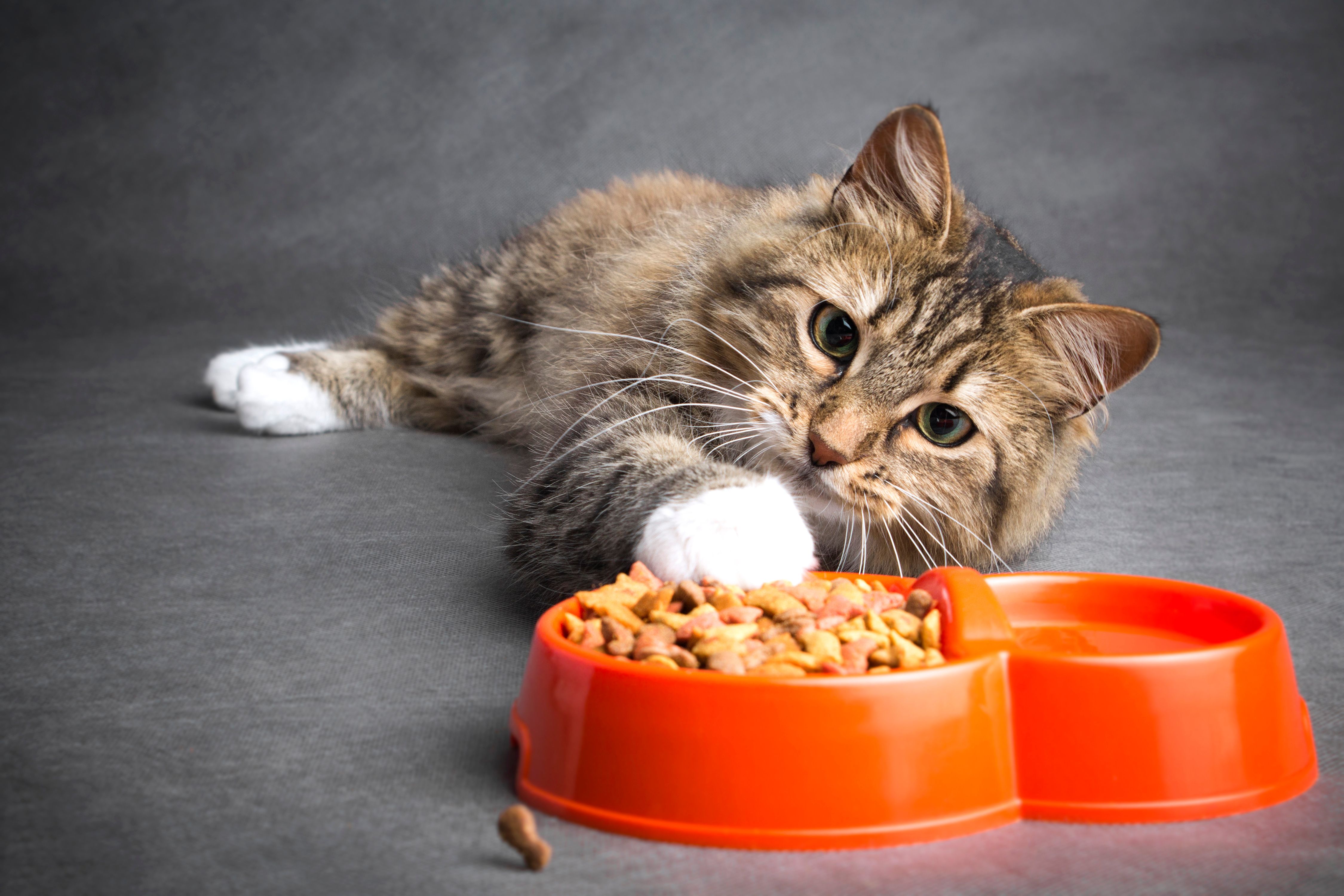The ingredients for feline weight loss
What cats need in their diet to maintain a healthy body condition score
fantom_rd / stock.adobe.com

“Obesity is now seen as the most common nutrition disorder [in cats]. It's not just an aesthetical problem anymore. We used to say, ‘What does it matter, that cat is a little bit chubby,’ [but] that really affects their health,” said Adronie Verbrugghe, DVM, PhD, DECVCN, at the American Association of Feline Practitioners 2023 Annual Conference in Memphis, Tennessee.1 Verbrugghe emphasized the severity of this global problem by sharing with attendees data from the 2022 Pet Obesity Prevalence Survey found that 61% of cats were classified as overweight or obese.2
“The recommendation when a cat is overweight is a weight loss plan to treat and prevent those health consequences, but also to improve their quality of life and quantity,” Verbrugghe stated. To start this weight loss plan, Verbrugghe discussed food selection and what nutrients and ingredients to look for to provide your obese or overweight patient the best diet, in her session, “Do Nutrients & Ingredients Matter for Weight Loss? How to Select a Diet.”
Nutritional assessment
“The first thing we should do is a nutritional assessment. We should do a screening evaluation every pet, every time they come to a veterinary clinic, and assess whether there are any risk factors present,” Verbrugghe said. All cats with a body condition score (BCS) larger than 5/9, will require an extended nutritional assessment, according to Verbrugghe, in order to gather further information on the circle of nutrition: the patient, the patient’s diet, and the feeding management and environment. With the nutritional assessment, Verbrugghe suggested to keep the client fully involved in the process to make sure they are on board. She stated, “It's important to ask the client about their goals, because this way, you can really tailor your weight loss plan better and make sure that it also aligns with client preferences and lifestyle.”
When you are ready to search for a diet that fits the needs of the patient and client, Verbrugghe recommended trying to find a commercial diet that works, and only suggest a homemade diet to clients when a commercial diet is not an option or there is not one available that fits all of their needs. However, Verbrugghe is clear to state that a homemade diet should only be formulated with the help of a boarded veterinary nutritionist. Verbrugghe also reminded attendees to be careful with some commercial diets that state a particular food line is weight loss just because it has less calories overall. Less calories does not equal weight loss, and specifically looking at the ingredients is key to having the right diet selection.
Nutrients and ingredients
- Energy density and fat: Reducing energy density in a weight loss diet can be key, and the major way to do that is by reducing the fat content. “You get 2 times the calories from 1 gram of fat compared to carbohydrates and protein,” Verbrugghe stated. Reducing fat and replacing it by increasing fiber and water can help reducing the energy density. This is also why wet or can foods tend to be lower in energy compared to dry food.
- Carbohydrates: Verbrugghe reminded attendees that carbohydrates is a very diverse nutrient group and to be careful saying it’s all bad. She stated, “We often forget that fibers are carbohydrates as well. We always say, ‘carbohydrates are bad’ and we lump everything all under the same term. But fiber can actually do a lot of good things for our patients.” Carbohydrates as dietary fiber can help produce weight loss by diluting calories, increasing satiety, and limiting food consumption as a result of more bulk being present in the gastrointestinal tract. Soluble fiber slows gastric emptying and therefore carbohydrate digestion and glucose absorption will be slower. However, soluble fiber can play a role in insulin sensitivity, according to Verbrugghe.
- Protein, amino acids, and water: Verbrugghe stated that, currently, there is only a small amount of research on protein, amino acids, and water in a feline diet to promote weight loss. She said moderate to high protein diets have been shown to spare lean mass with calorie restriction. “But we have to keep in mind that it's not just the amount of protein that is important, it's also the protein quality and the amount of the specific amino acids.” She also mentioned that high-moisture diets for cats may increase satiety and help promote weight loss. However, with any of these particular nutrients, more research on how they aid in weight loss would be ideal.
Client takeaways
According to Verbrugghe, if the cat and client prefer dry food, she typically recommends a diet that is high in fiber and low in fat and therefore has a low energy density. Low carbohydrate diets tend to have higher fat levels, therefore have a higher calorie density, which results in a small food volume, which might be less appealing for the cat and the owner. A lower volume may cause an increase in begging from the cat, however, Verbrygghe also stated, “I have less concerns with feeding a low carbohydrate diet, when it's a wet food. I have more concerns when it’s a dry food.”
Verbrugghe ended her presentation with one last reminder: “You will need a [commercial] diet that is formulated for weight loss or there is a chance that there will be essential nutrient deficiencies.”
References
- Verbrugghe A. Do Nutrients & Ingredients Matter for Weight Loss? How to Select a Diet. Presented at: American Association of Feline Practitioners 2023 Annual Conference; Memphis, Tennessee; October 12-15, 2023.
- Surveys & Data. Association for Pet Obesity Prevention. Accessed October 17, 2023. https://www.petobesityprevention.org/2022#:~:text=The%202022%20Pet%20Obesity%20Prevalence,a%20slight%20increase%20from%2060%25